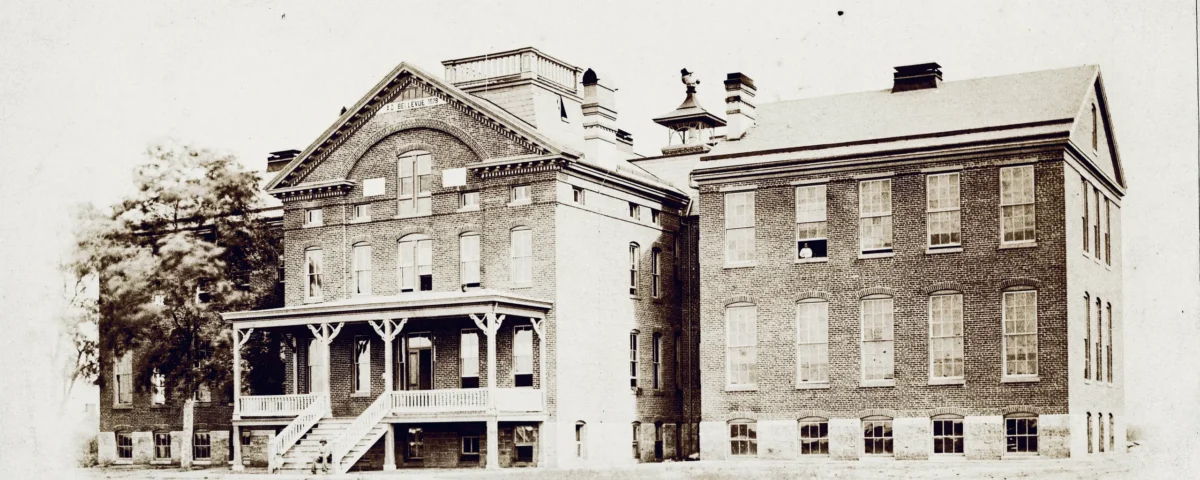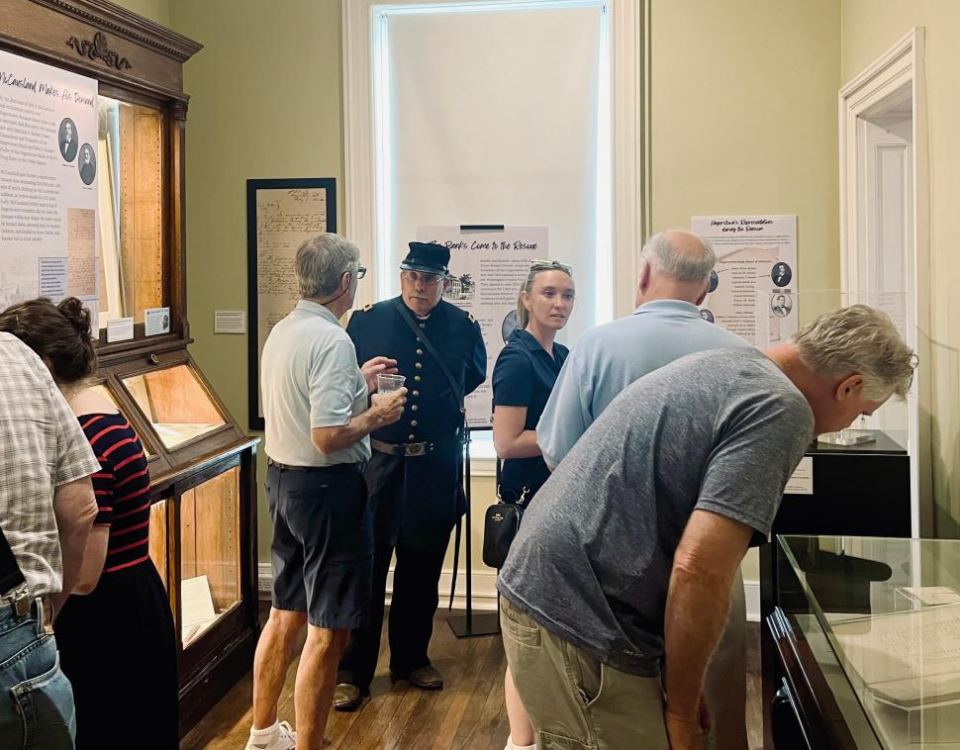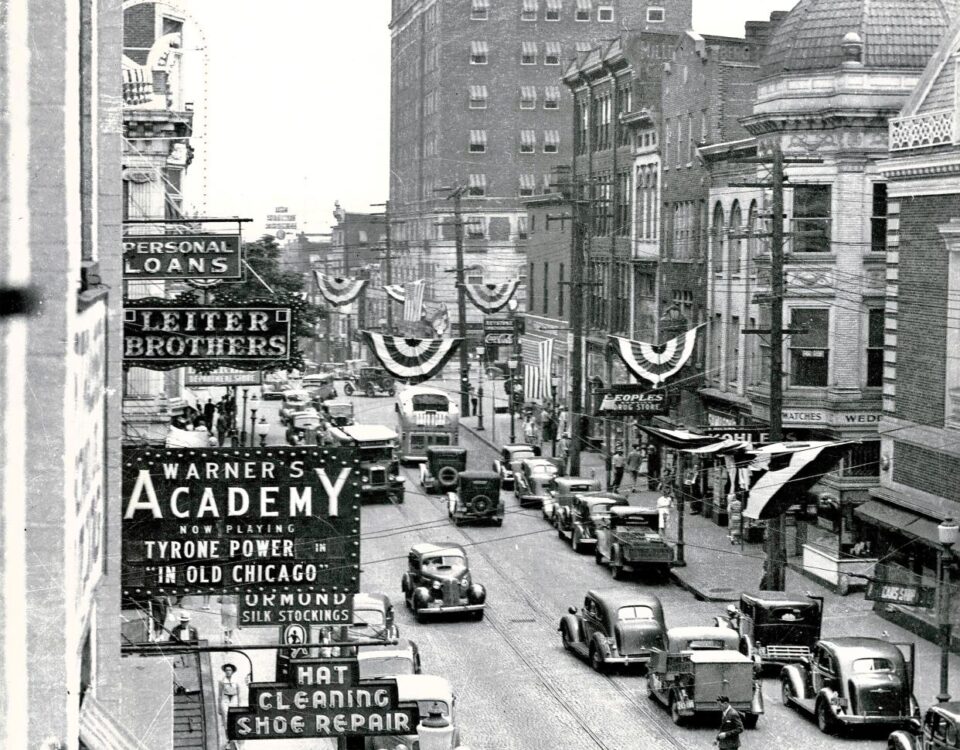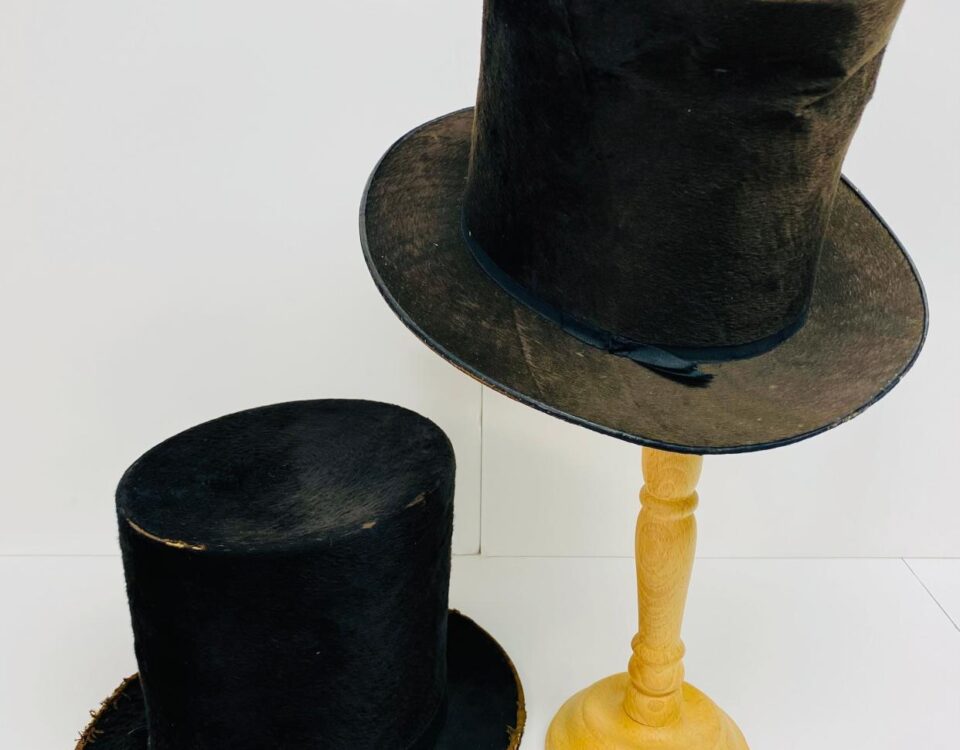Bellevue Asylum records recall the lives of local residents with mental and physical needs
Article Author: Abigail Koontz (This article originally appeared on The Herald-Mail June 11, 2023)
The name “Bellevue” may bring to mind the infamous Bellevue psychiatric hospital in New York City, which has a history reaching back to an 18th century almshouse. But did you know that Washington County had its own institution named Bellevue Asylum?
Built in 1879, the historic Bellevue Asylum was located on the present site of Coffman Nursing Home. Bellevue Asylum stood for 77 years before it was torn down in 1956, and its history is deeply connected to the lives of Washington County residents and the development of healthcare facilities in the United States.
To understand Bellevue Asylum’s history, we must return to the year 1800, when Trustees of the Poor for Washington County proposed building a home for the “relief of the poor” in Elizabethtown (now Hagerstown). This building, completed in 1800, was called the Washington County Almshouse. It still stands at 239 N. Locust Street.
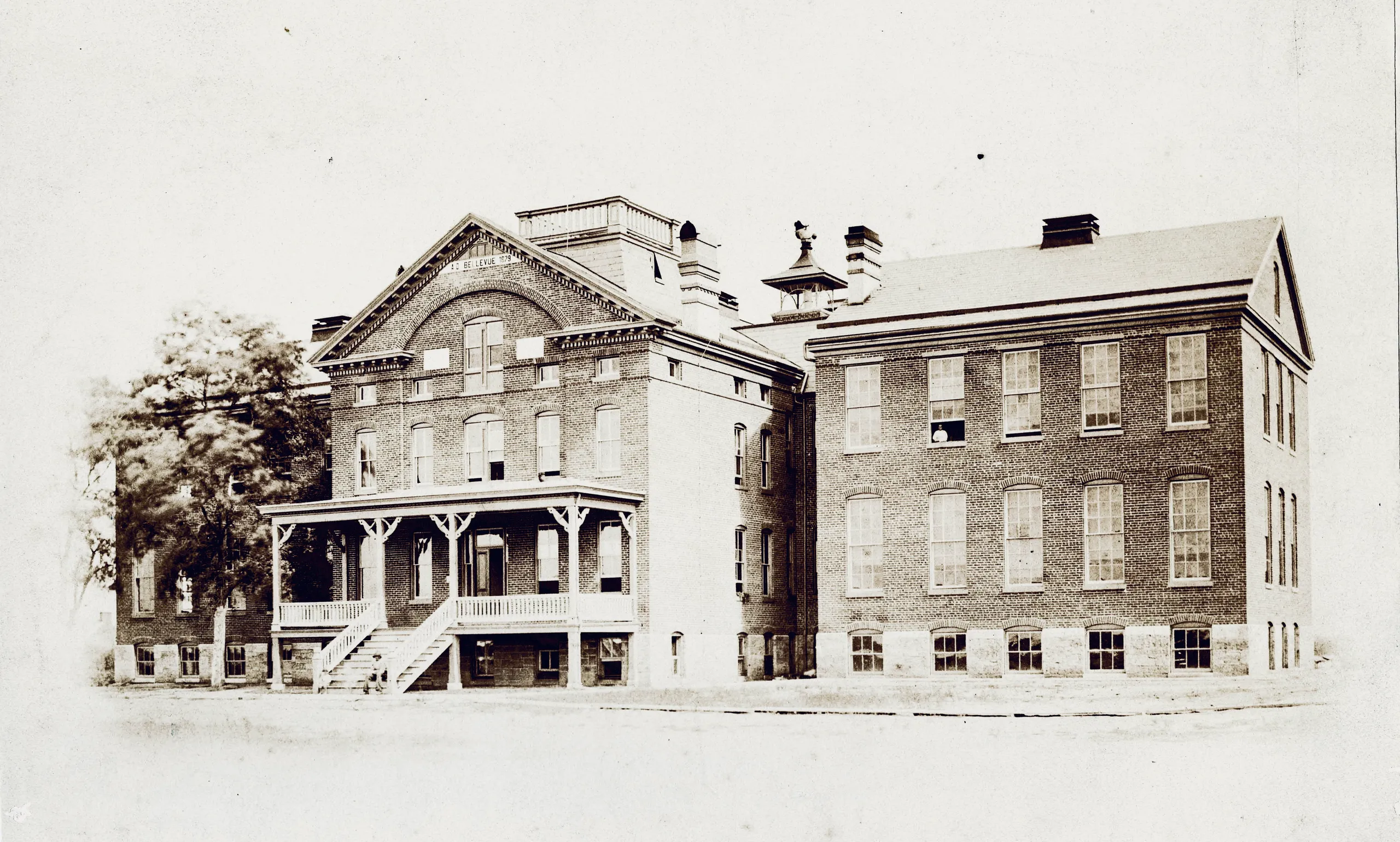
But attitudes toward the almshouse location caused concern. The almshouse developed a reputation for attracting “tramps” and “idlers,” and town residents requested a more remote location.
In 1878, John Nicodemus of Boonsboro gifted farmland to Washington County for a new almshouse. The farm was at the present site of the Western Maryland Hospital Center along Pennsylvania Avenue.
The 112-acre Nicodemus farm was considered countryside in 1878, respectably removed from Hagerstown. Plans quickly fell into place for building a new structure and tending the property’s farmland, which would provide livestock and produce, farmed by residents themselves.
Construction began in 1879. The building, designed in the shape of a cross, was made from 700,000 bricks fired from local clay. It could hold 150 residents, called “inmates,” with separate wings for the sick and nonviolent, and those who were considered “insane.” By 1880, all inmates from the North Locust Street almshouse had moved into the new facility, officially named Bellevue Asylum.
After opening in 1880, Bellevue operated as a place for county residents and beyond who dealt with mental health disorders, physical disabilities or injuries, pregnancy, diseases like tuberculosis or other conditions that left them unable to support themselves.
The Washington County Historical Society collection includes eight Bellevue Asylum record books, dating from 1880 to 1925. These books contain information such as the residents’ name, birthplace, age, intake date, color of skin, discharge date, death date if it occurred at Bellevue, and general remarks commenting on residents’ condition or their burial place.
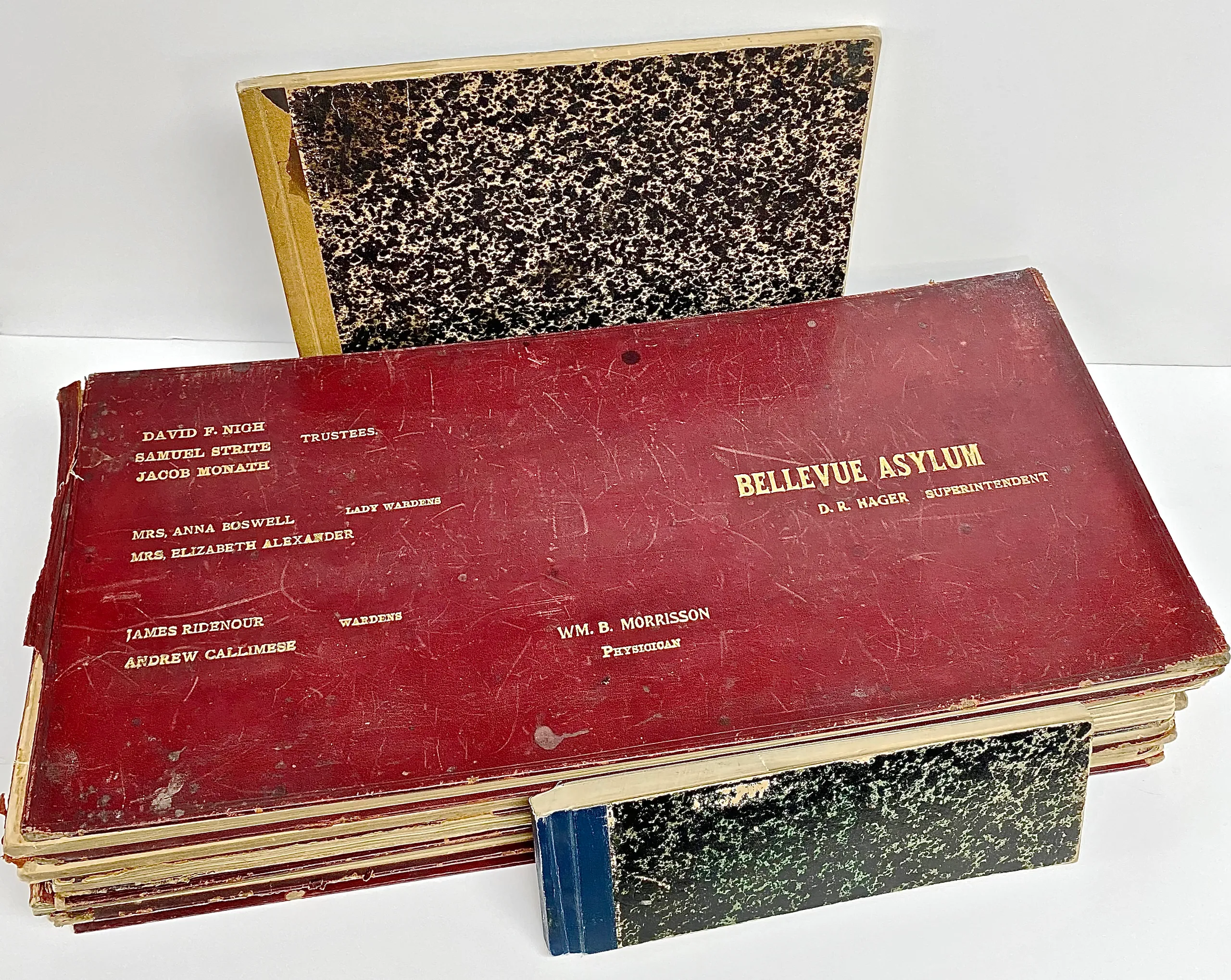
The books offer valuable insights into Bellevue residents’ lives. For example, just several pages of the 1892 record book share that the following people stayed at Bellevue: Benjamin Brosius, a 60-year-old man from Hancock considered a “Lunatic”; Henry Cromwell, a 50-year-old man who had a “Kidney Affliction”; and Annie M. Bovey, a woman from Cavetown who was “Insane,” admitted by court order.
One page contains the records of two young women from Hagerstown — Annie L. Adison, 14, and Annie Allen (age not specified) — who were both at Bellevue because they were “Enceinte,” a term meaning pregnant.
Bellevue residents also came from states outside Maryland, such as Louisiana, North Carolina, Pennsylvania and Virginia, and cities including Brooklyn, N.Y.; Frederick, Md.; and Chambersburg and Greencastle, Pa. Other residents included immigrants from Ireland, Germany or Russia. The asylum was a diverse place, holding people from different social, economic and racial backgrounds, and we are left to wonder about their lives and experiences.
By 1940, Bellevue Asylum adopted the name Washington County Home for the Poor, as county almshouses were replaced by state-operated chronic disease hospitals. In 1956, plans were underway to remove Bellevue Asylum. The Western Maryland Hospital Center was built over the farm by 1957, with the Coffman Nursing Home replacing the actual site of the asylum by 1961. The remains of 400 individuals who had died and were buried at Bellevue Asylum were removed to a group plot at Rose Hill Cemetery.
The WCHS genealogy library, kinship, welcomed a visitor in April who was hoping to find evidence that his relative, who had died at Bellevue Asylum in 1910, was buried at Rose Hill. After searching through the Bellevue records, we discovered that his relative was buried in Greencastle rather than Rose Hill. Finding his relative’s story in the record book was a poignant reminder of why WCHS seeks to preserve these records. They hold vital information that connects people to their families and our past.
The Bellevue Asylum record books at the WCHS will soon have new acid-free archival boxes for long-term storage, thanks in part to a recent grant from the Community Foundation. These records are available to the public, and if you are tracking down any relatives who spent time at Bellevue Asylum or lived in Washington County, be sure to stop by kinship to check them out!

